Companion Planting
Tomatoes love basil.
Kale loves dill.
Is it really that simple?
Yes and no.
Companion planting is the art of planting your garden so everything will thrive in each neighbor’s company.
Here is the bottom line: Diversity is essential for a healthy, gorgeous garden.
And the more the merrier: More species, more varieties, more flowers, more insects, more abundance, more joy.
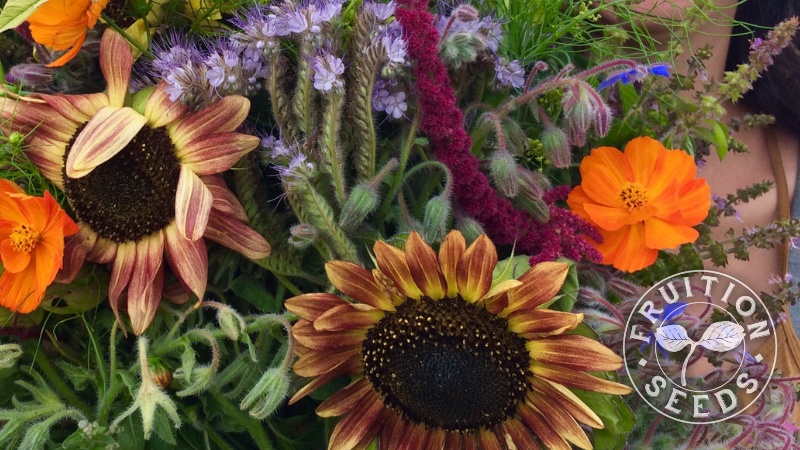
Our insectary mix, full of diversity delicious for countless species.
What makes a good companion plant? Here are the three characteristics I consider when pairing companion plants, followed by my four go-to companion plants for any garden.
Three Kinds of Companions:
1. Height + Light
Tall plants can act as a living trellis for climbing crops. For example, pole beans grow marvelously up sunflowers and corn.
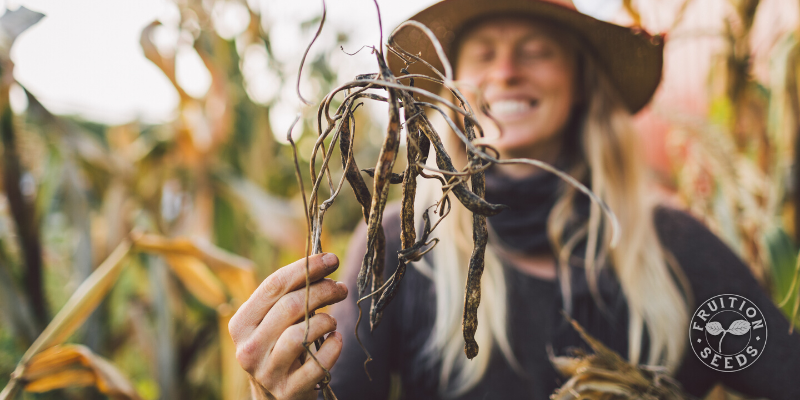
Sunflower and corn are living trellises for pole beans.
Tall crops often create shade in your garden, as well. Limit the shade they make by planting tall crops north/south rather than east/west. Any fruiting crop (tomato, cucumber, melon) will produce less in shade. On the other hand, leaf crops like lettuce and cilantro bolt less quickly in the summer heat if tucked in the shade of tomatoes or sunflowers.
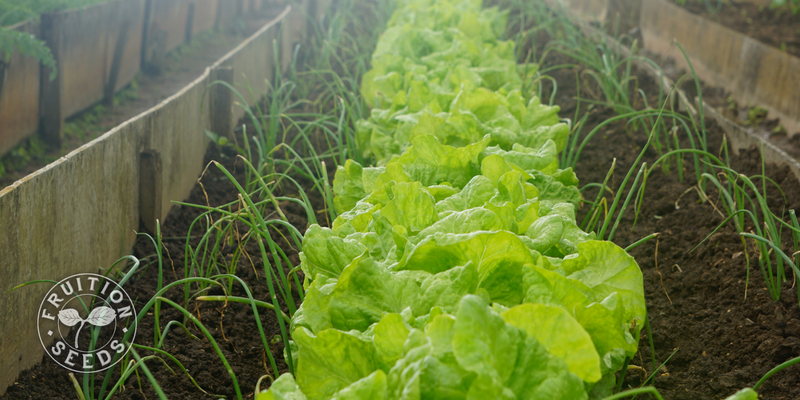
Lettuce and other leaf crops can be tucked among onions in spring. Lettuces also thrive in the shade of taller plants in summer.
2. Space Efficiency
Some plants, planted together, significantly maximize your garden space, increasing your time efficiency and abundance.
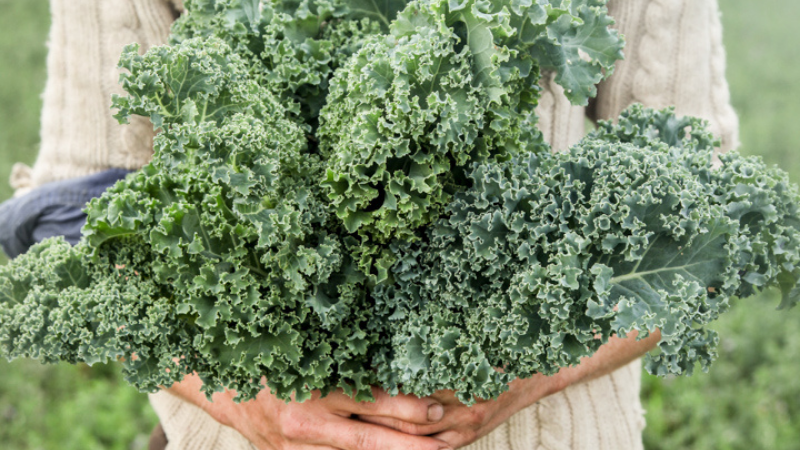
Dwarf Vates kale is impressively abundant as well as short, making it an ideal companion plant for garlic & other alliums.
Also called interplanting, there are so many strategies and possibilities. Which I’ll soon share in another post! In the meantime, here are a few of my favorite combinations:
- dwarf vates kale among leek, onion, shallot or garlic
- baby lettuce or spinach between garlic
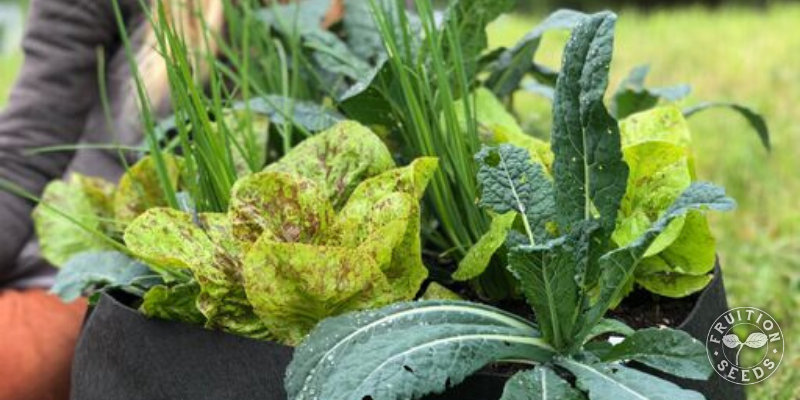
In a 15-gallon fabric container, we transplanted lacinato kale, flashy troutback lettuce and scallions. Once the lettuce is a small head, we’ll harvest it either all at once or by single leaves over a couple weeks, making room for the kale to grow larger. The scallions, which we harvest throughout the season, deter cabbage moths with their sulfurous compounds.
3. Pest & Disease Management
This is the real magic of companion planting. The compounds of certain plants attract beneficial insects, deter pest insects and otherwise increase the resilience of your garden.
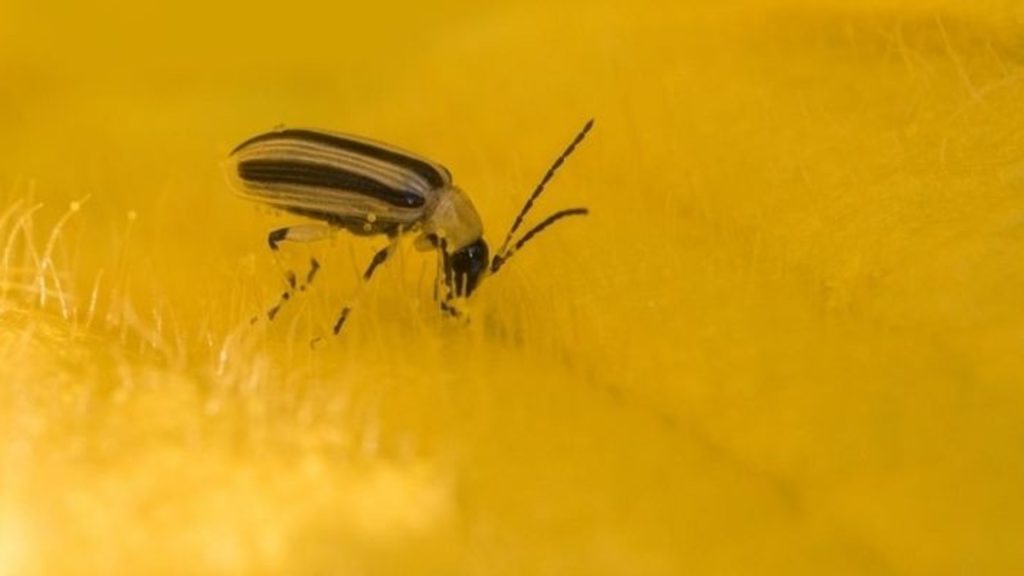
For example, from root to leaf to blossom, marigolds are full of carotenoids and other compounds in their roots that deter nematodes (making them especially helpful companions for onions, garlic and other alliums) while their leaves and flowers abundantly attract beneficial insects.
Alliums are another example. Including onions, leeks, scallions, garlic, shallots and chives, the alliums are a diverse and highly aromatic family. Their characteristic taste, smell & tear-inducing pungency reveals copious sulphur compounds, offering humans medicinal properties as well as deterring rabbits, slugs, aphids, cabbage loopers and Japanese beetles. Try tucking onions between your lettuce and other low-growing crops. Try sowing spinach and other greens between your garlic. Tuck perennial chives just about anywhere: their blossoms attract butterflies, honeybees and native bees and are delicious in salads and stir-fries. Plus, chive blossom tempura is nectar of the gods.
- Our Go-To Companion Plant Guide: This Wikipedia collection is my favorite, most comprehensive resource for companion planting.
Fruition’s Four Favorite Companion Plants
Here are my four go-to plants that make marvelous companions for everything else in your garden:
1. Queen Sophia & French Brocade Marigolds
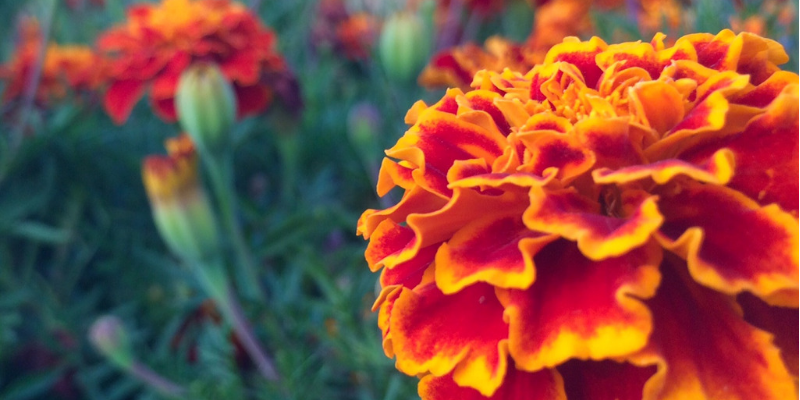
Queen Sophia Marigold, barely one foot tall and wide, is an ideal companion plant.
From root to leaf to blossom, marigolds are full of carotenoids and other compounds with countless functions. Their roots deter nematodes (making them especially helpful companions for onions, garlic and other alliums) while their leaves and flowers abundantly attract beneficial insects. Beneficial insects may be ‘beneficial’ for three main reasons:
- Beneficial insects abundantly pollinate your crops (honeybees, syrphid flies)
- Beneficial insects abundantly eat ‘pest’ insects (ladybugs, lacewings & praying mantis)
- Beneficial insects lay eggs in ‘pest’ insect larvae, effectively killing them (trichogamma wasps)
Only one foot tall and wide yet wildly prolific in blooms, Queen Sophia or French Brocade are perfect companions for virtually anything. We plant on the ends of beds, between broccoli, tucked between cucumbers. Thriving in containers, these marigolds are without question the most ubiquitous companion plants you’ll find scattered throughout our farm each season.
2. Calendula
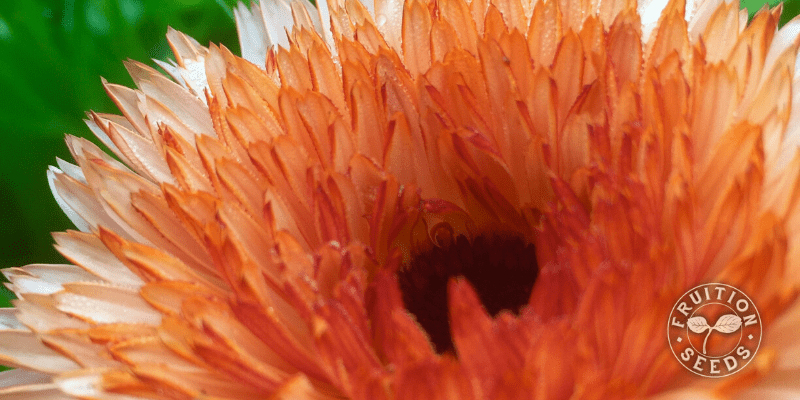
Zeolights calendula, with its countless bi-color petals, is edible and beloved by countess beneficials.
Calendula is a bit larger than Queen Sophia marigold, about two feet tall as well as wide. It’s chock-full of different though comparable compounds in its abundant and edible flowers, which are also medicinally used in skin-healing salves. You’ll be in awe of the diversity of beneficials attracted to your calendula, from butterflies to bees, from hummingbirds to iridescent native flies gloriously pollinating everything in your garden. Calendula is larger than dwarf marigold and readily re-seeds, so we tend to plant it in places on the ends of beds where it’s easy to harvest. This makes it easier to enjoy in summer salads, harvest for salves and dead-head so it won’t become a carpet. If you’re looking for the most color in your salads and cakes, sow Remembrance Mix. If you’re looking for medicinal compounds so abundant they’re sticky, sow Resina.
3. Herbs: Basil, Thyme, Oregano, Sage, Dill & Lavender
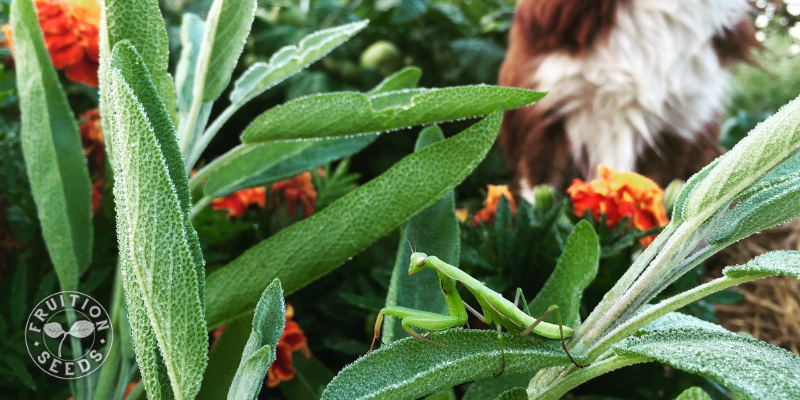
Can you find the praying mantis on the sage, beside Queen Sophia marigold, at the end of the tomatoes with Pancho?
Okay, I couldn’t name just one! But now you know: there are several easy to grow, super aromatic and compact herbs that compliment just about any plant around them. They attract countless beneficial insects (including honeybees, ladybugs, lacewings, praying mantis and Tiger Swallowtail butterflies) while deterring aphids, spider mites, squash bugs and cabbage loopers. These herbs we’ll most often tuck at the ends of rows for ease of harvest, though they’ll amicably companion throughout your the rows of kale, chard, lettuce and beans. Dill, with sparse leaves and lacking a fear of height, can readily be tucked between tall broccoli, kale, peppers and tomatoes as well as cucumber and squash.
4. Alliums: Chives, Garlic & Onion
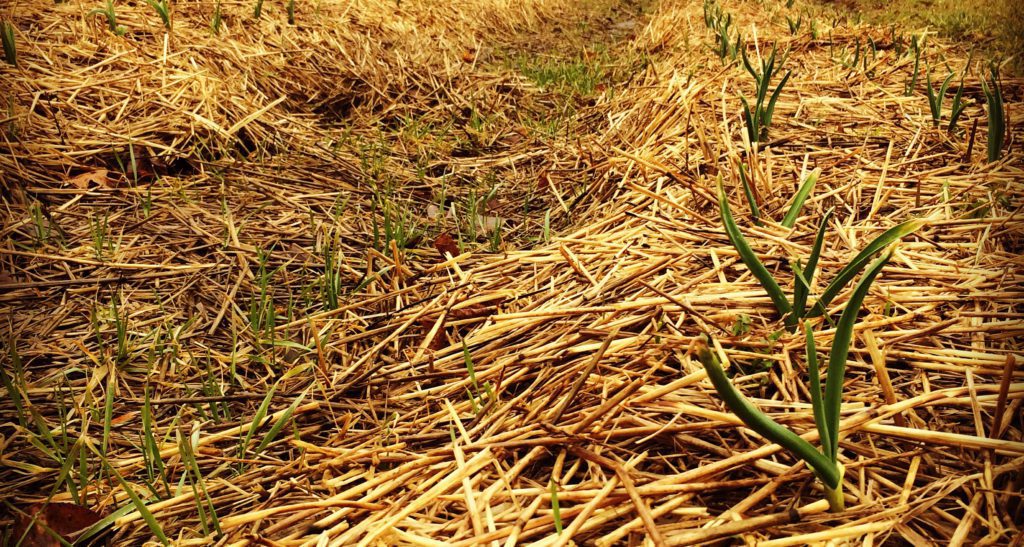
Mulched spring garlic is perfect to tuck transplants of spinach, lettuce and chard.
Alliums are a diverse and highly aromatic family. Their characteristic taste, smell & tear-inducing pungency reveals copious sulphur compounds, offering humans medicinal properties as well as deterring rabbits, slugs, aphids, cabbage loopers and Japanese beetles. Try tucking onions between your lettuce and other low-growing crops. Try sowing spinach and other greens between your garlic. Tuck perennial chives just about anywhere: their blossoms attract butterflies, honeybees and native bees and are delicious in salads and stir-fries. Plus, chive blossom tempura is nectar of the gods.
Companion Planting: Art or Science?
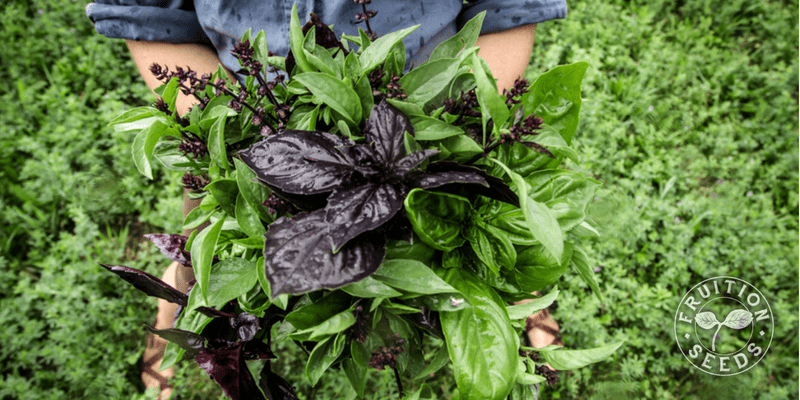
Companion planting is an art, Friends. Not a science. There is very little empirical research to confirm much of the writing you’ll find online. Which is to say, the patterns you observe are priceless. What insects are attracted to what plants? What insects are eating other insects? What strategies are reaping more abundance that you ever expected? Share your observations with your fellow gardeners across the fence and on social media. The more we share the more we learn. Gardening is truly an art. Thanks for sharing your art with us! And enjoy!
Happy spring and happy experimenting, Friends!
Sow Seeds & Sing Songs,

and the Many Beings of Fruition
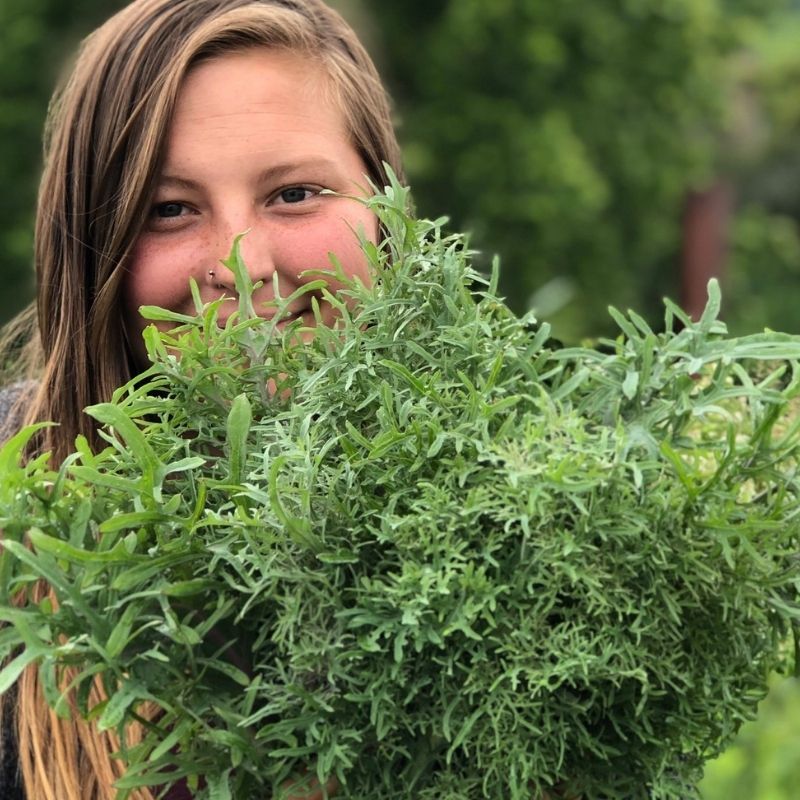
Join the
Fruition Family!
Our weekly organic gardening emails share seasonal inspiration as well as insight
~When you join us, check your inbox for your welcome & access info! Stay tuned for our weekly organic gardening tips & inspiration, as well~

I love reading your info ❤️🙀🙃😊😃😺👩🏼
Thanks, Petra! Great article with lots of useful information. I’m always looking for ways to make the most of my garden space.
Thank you for sharing all the great information!
Thank you so much for your encouragement, energy and knowledge that you so kindly share with the world.
Thank you for the kind words and for being a part of the Fruition community<3
Petra, You gave me a lot more to think about than I would have come up with on my own. Great information. You’re doing a great job for all of us. Thanks a ton.
The main strategy I employ for companion planting is based on minimizing and managing soil disturbance. I like to practice minimal till, so planting crops together that I can mulch after transplanting and then leave all winter undisturbed for next season (like tomatoes with basil, or eggplants and snapdragons) or that I’m going to pull or dig up (potatoes and onions) helps me build soil fertility and keep the weeds down more efficiently.
Hi Lindsay, thank you for sharing you insight!
Melissa